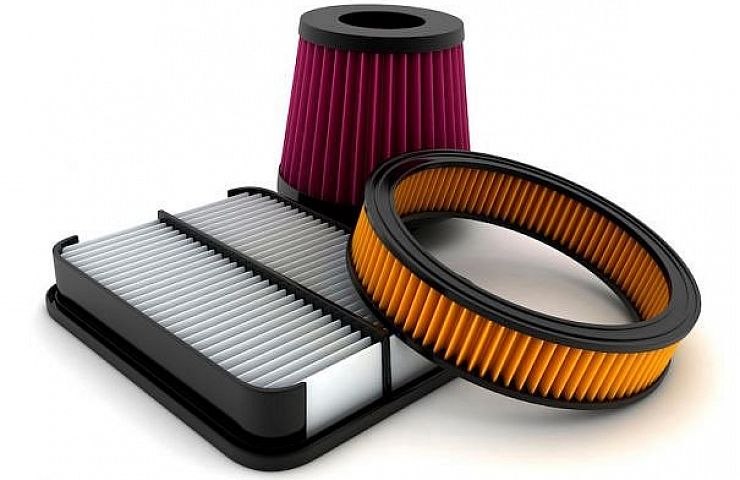Dirt inside a vehicle’s engine is a recipe for disaster. The result could be poor gas mileage, shorter engine life, and big repair bills. Fortunately, your car’s air filter ensures that the air entering the powertrain is clean and pristine. And the essential once-a-year chore of replacing an engine air filter is an easy 10-minute DIY task.
Shop now for engine air filters
Air Filter Types
Air filters have not changed much over the years. There are three common types used to filter air going into an engine. Most car air filters use a filter of pleated fiber or paper to trap the dirt. It is efficient and does a good job.

Washable JDM mushroom-style air filter
Some filters use soft rubber-like foam, usually lightly saturated with oil, to help trap more dirt. These are especially popular in off-road or extreme dusty road conditions because they can be washed with a detergent, re-oiled, and used again.

Cotton gauze filters are washable and re-usable.
The third type of filter, popularized by K&N Filters among other brands, is a gauze media.
These can also be cleaned, re-oiled, and used multiple times. A gauze filter allows more air to flow—and more air means greater combustion and power during heavy acceleration.
Once a Year Maintenance
Check your owner’s manual for the recommended engine air filter change interval. Generally, you can’t go wrong if you swap the filter (or clean and re-oil) every year or 12,000 miles.
Some gauze-style filters can last up to 50,000 miles before cleaning—when used primarily on the highway. When you remove the air filter, hold it up to a flashlight or bright sun.
If the light easily shines through your engine air filter, it probably is still functional and doesn’t need to be replaced. But if the light is blocked, it’s time to change the filter. Also, tap the filter on the ground. If copious amounts of dirt fall out of the filter, that’s another sign that you need to replace the filter.
Find and Replace Your Engine Air Filter
Replacing an engine air filter is easy. For older cars, there’s probably a ring-shaped filter on top of the carburetor. A simple metal lid is held in place by a wing nut. Remove the wing nut, remove the cover, and take out the old air filter.
Be prepared to wipe down the inside of the air filter housing with a moist rag to get the last bits of dirt trapped by the air filter. Next, verify that the new filter is the same size as the old one, place it on the bottom of the housing, replace the lid and tighten the wing. Done and done.

Modern cars typically provide easy access to the engine air filter by releasing clips.
Newer cars typically situate the engine air filter within the air intake system. The filter is usually the shape and size of a large book. The intake can be unbolted or unclipped. Next, open the intake housing, check for any remaining debris, remove the old dirty filter, and insert the new air filter.
Close and tighten things up—and you are good to go.
Pro tip: Write the date and mileage on the filter’s edge with a marker. This will remind you later when you last replaced the filter.
How to Clean Your Engine Air Filter
If you are re-using the foam filter or a gauze filter, the directions to remove the filter are the same.
Follow the filter maker’s directions to clean the filter. That typically requires saturating the old filter with a cleaning solution and rinsing it with fresh water. Then, give it time to dry thoroughly.
Re-oil the filer with a light mist. Too much oil could foul up other portions of the car’s intake, like the mass air flow sensor. Replace the oiled filter, and you’re done. (Pat yourself on the back for reducing waste by re-using the paper filter instead of throwing it away).
Shop now for filter cleaning solution
A clean air filter allows an engine to receive the maximum amount of air for combustion. Since gauze filters are designed to be less restrictive than paper-based filters, they allow more air to enter the engine with reported gains of three to five horsepower.
If you want a more significant improvement, consider an advanced cold air intake system.
Read this: Can a Cold Air Intake Add 30 Horsepower?










